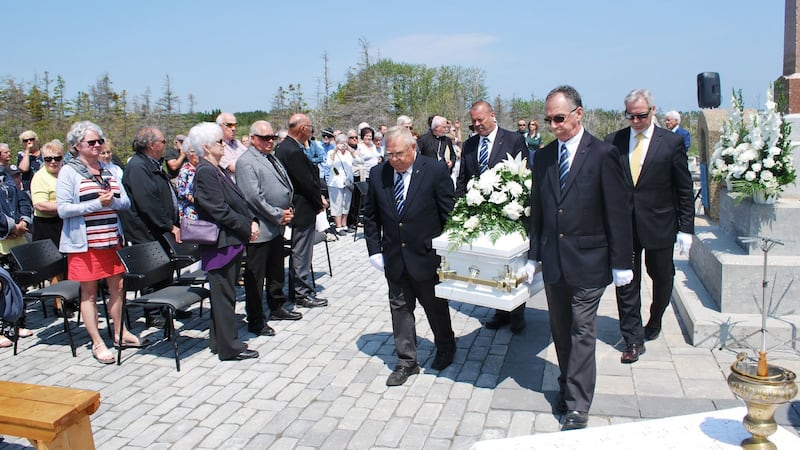The remains of 21 Irish shipwreck victims which washed up on a beach in Canada have been laid to rest.
Human bones were found on a beach at Cap-des-Rosiers, Quebec, between 2011 and 2016.
It was confirmed earlier this year that the remains were from the Carricks ship, which had been transporting 180 Irish people across the Atlantic when it sank.

The Carricks departed Sligo in 1847 for the port of Quebec when it sank off the coast of Cap-des-Rosiers.
It came at the height of the Famine during which a million people died.
The bones were identified at the bioarchaeology laboratory at the University of Montreal as belonging to three children, aged between seven and 12.
In 2016 the remains of a further 18 people were discovered, mostly women and children.
The analysis also revealed that the victims would have eaten a diet mainly of potato, as was common in Ireland at the time, and that they had been suffering from pathologies probably caused by malnutrition.
The remains of the 21 were laid to rest following a ceremony on Thursday at the Irish Memorial on Cap-des-Rosiers Beach.
Pat Ward (63) from Keash, Co Sligo, told the BBC his family believes some of their ancestors were among those who died in the shipwreck.
He said it was “very emotional” to think his ancestors may be among those recovered, but the ceremony would “bring closure”.
Marie-Eve Murray, of Forillon National Park, said the ceremony was attended by around 150 people, including descendants of some of the survivors of the shipwreck.
“A ceremony intended to pay homage to the victims of the Carricks shipwreck took place on Thursday July 4th at 10.30am at the site of the Irish Memorial, located on Du Banc trail, North Area of the Forillon National Park,” she told PA.
“This ceremony, organised by the St-Alban Parish Council in Cap-des-Rosiers in collaboration with Parks Canada, was attended by around 150 people: the descendants of the survivors, dignitaries and the local population.”
The Famine is believed to have killed a million people between 1845 and 1849 when the potato crop failed.
Hundreds of thousands of people emigrated in this period.–PA







